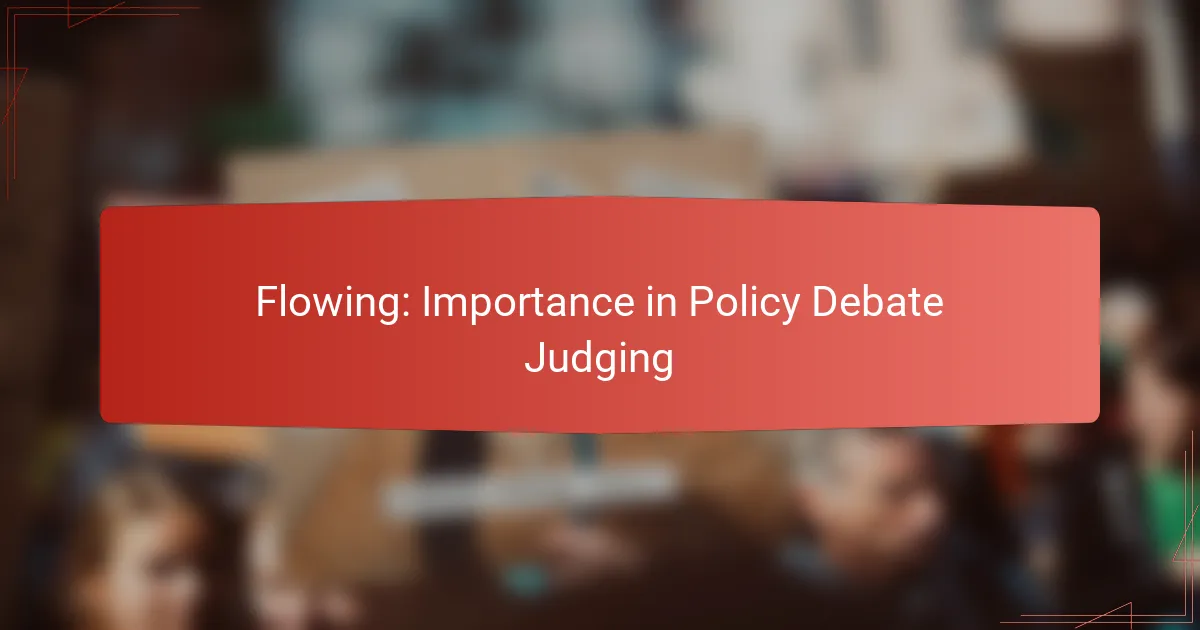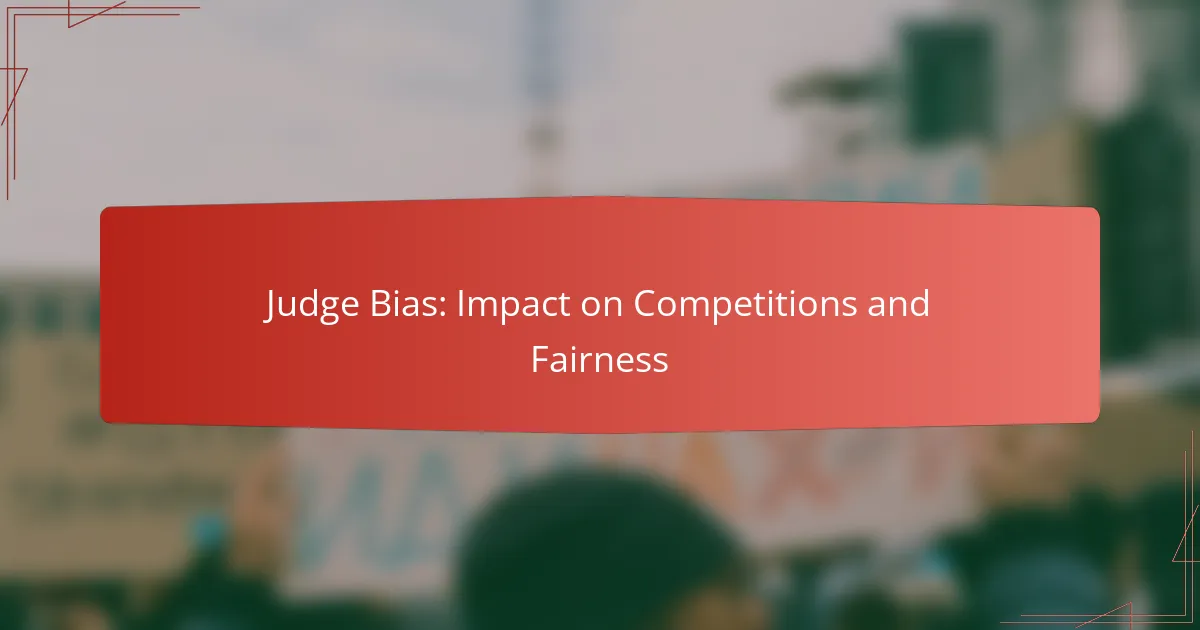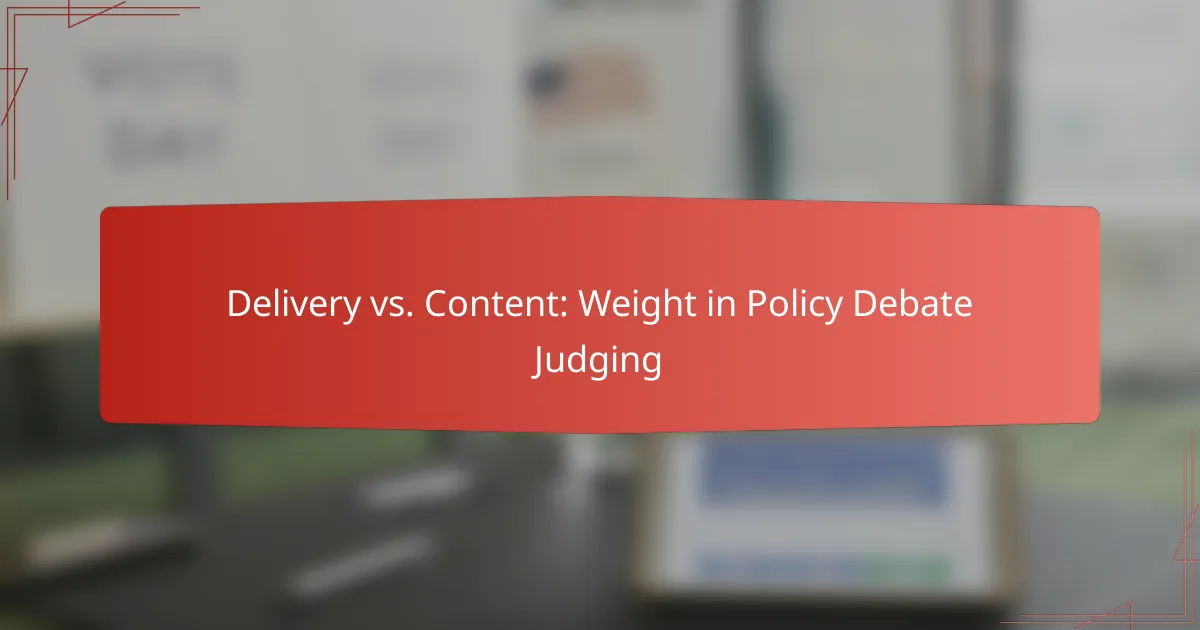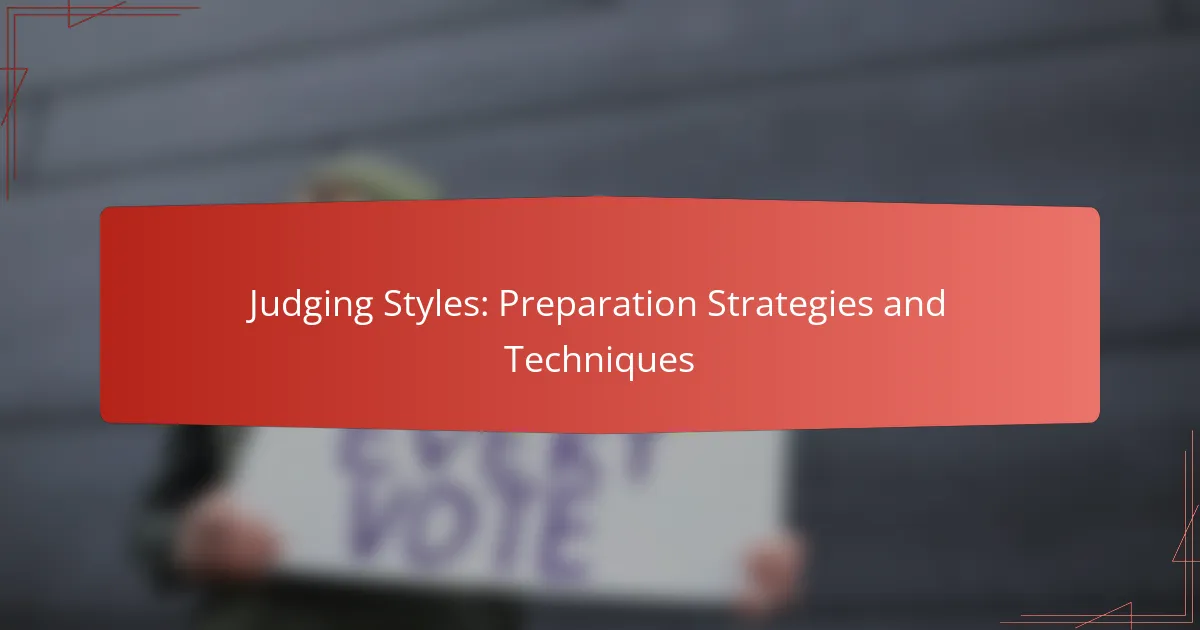Flowing is an essential technique in policy debate judging that allows judges to effectively track the evolution of arguments throughout the round. By visually organizing information, flowing enhances a judge’s ability to follow the debate’s dynamics and assess the strengths of each team’s case, ultimately leading to more informed decisions.
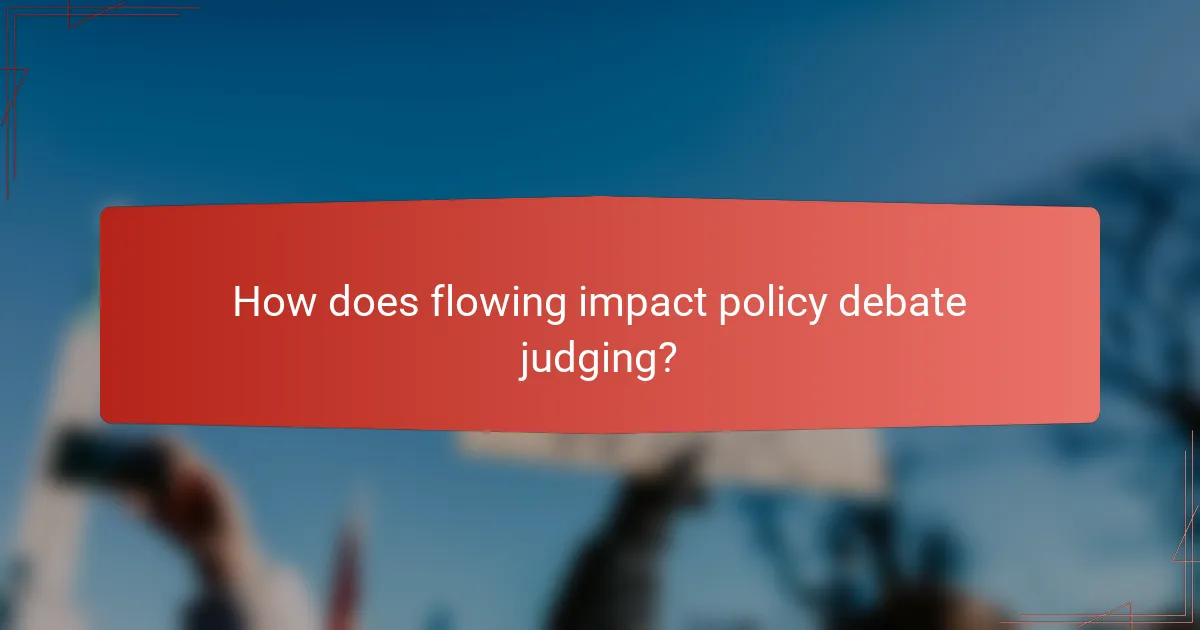
How does flowing impact policy debate judging?
Flowing is a critical technique in policy debate judging that helps track arguments and their developments throughout the round. By organizing information visually, flowing enhances the judge’s ability to follow the debate’s progression and evaluate the effectiveness of each team’s case.
Enhances clarity of arguments
Flowing clarifies the structure of arguments by allowing judges to see how each point connects to the overall debate. This visual representation helps in identifying key claims, evidence, and rebuttals, making it easier to assess the strength of each side’s position.
For example, when debaters clearly flow their arguments, judges can quickly pinpoint where a team has effectively countered an opponent’s point or where gaps in logic may exist. This clarity can significantly influence the judge’s decision-making process.
Facilitates judge comprehension
Effective flowing aids judges in comprehending complex debates by summarizing arguments in a manageable format. Judges can refer back to their flow sheets to recall specific points, ensuring they accurately capture the nuances of each team’s strategy.
To maximize comprehension, judges should develop a consistent shorthand for flowing that includes symbols or abbreviations for common terms and arguments. This practice can streamline the note-taking process and enhance overall understanding during the debate.
Improves speaker engagement
When debaters flow their arguments well, it can lead to greater engagement from the judges. A clear flow allows judges to follow along easily, making them more likely to stay focused and attentive throughout the round.
Debaters should aim to present their arguments in a way that invites interaction, such as by referencing previous points or anticipating questions. This proactive approach can create a more dynamic atmosphere, benefiting both the speakers and the judges.

What are effective strategies for improving flowing in debates?
Improving flowing in debates involves adopting specific strategies that enhance note-taking, listening skills, and the use of visual aids. These techniques help judges accurately track arguments and counterarguments, leading to more informed decisions.
Utilizing structured note-taking
Structured note-taking is essential for effective flowing, as it allows judges to organize information clearly. Using a consistent format, such as a grid or outline, helps in categorizing arguments and responses, making it easier to reference them later.
Consider using symbols or color coding to differentiate between types of arguments, such as advantages, disadvantages, and rebuttals. This visual distinction can speed up the process of identifying key points during a debate.
Practicing active listening
Active listening is crucial for effective flowing, as it ensures that judges fully comprehend the arguments presented. This involves focusing intently on the speaker, avoiding distractions, and taking notes that reflect the essence of the arguments.
Judges should practice summarizing points in their own words to reinforce understanding and retention. This technique can help in identifying the most relevant arguments and counterarguments during the debate.
Employing visual aids
Visual aids can significantly enhance the flowing process by providing a clear representation of arguments. Simple tools like charts, graphs, or diagrams can illustrate complex relationships and make it easier for judges to follow the flow of the debate.
When using visual aids, ensure they are clear and concise, avoiding clutter that can confuse rather than clarify. A well-organized visual representation can serve as a quick reference during the debate, aiding in the retention of key points.

What criteria should judges use to evaluate flowing?
Judges should evaluate flowing based on consistency in argument tracking, accuracy in capturing key points, and clarity of written notes. These criteria ensure that the flow of the debate is effectively communicated and understood, allowing for fair and informed decision-making.
Consistency in argument tracking
Consistency in argument tracking involves maintaining a coherent record of the arguments presented by both sides throughout the debate. Judges should ensure that each argument is logged in a way that reflects its development and response over time. This helps in understanding how each point interacts with others and allows judges to follow the flow of the debate seamlessly.
To achieve consistency, judges can use a structured format, such as a grid or outline, to organize arguments by speaker and round. This method helps in quickly identifying which arguments have been addressed and which remain contested.
Accuracy in capturing key points
Accuracy in capturing key points is crucial for effective flowing, as it ensures that the essence of each argument is correctly recorded. Judges should focus on noting the main claims, evidence, and rebuttals presented, avoiding misinterpretations or omissions that could skew their understanding of the debate.
A practical approach is to use shorthand or symbols for common terms and phrases, allowing judges to keep pace with the debate while ensuring that critical points are accurately documented. Regularly reviewing these notes can help judges verify that they have captured the arguments correctly.
Clarity of written notes
Clarity of written notes is essential for judges to reference their flowing during the decision-making process. Notes should be legible and organized, using clear headings and bullet points to differentiate between arguments and responses. This clarity aids judges in quickly locating information when needed.
Judges should avoid overly complex language or abbreviations that may lead to confusion later. Using consistent terminology and formatting can enhance the readability of notes, making it easier to follow the debate’s progression and arrive at a fair conclusion.

How does flowing differ across debate formats?
Flowing varies significantly across debate formats, impacting how judges and participants track arguments and responses. Each format has its own conventions and priorities, which influence the structure and complexity of flowing techniques.
Flowing in Lincoln-Douglas debates
In Lincoln-Douglas debates, flowing is primarily focused on the clash of values and ethical considerations. Debaters typically use a simple flow sheet to track arguments, counterarguments, and rebuttals, emphasizing clarity and direct engagement with the opponent’s case.
Judges expect a clear presentation of value frameworks and contentions, making it crucial for participants to organize their flows to highlight key points. A common pitfall is overcomplicating the flow; keeping it straightforward enhances comprehension.
Flowing in Public Forum debates
Public Forum debates require flowing that captures both sides of a resolution and the public’s perspective. Debaters often use a more conversational style, focusing on evidence and real-world implications, which necessitates a flow that balances clarity with depth.
Participants should track arguments, evidence, and responses in a way that reflects the audience’s understanding. A useful tip is to categorize arguments by pro and con, which helps in quickly identifying key points during crossfire and summary speeches.
Flowing in Policy debates
In Policy debates, flowing becomes more intricate due to the complexity of arguments and the volume of evidence presented. Debaters must manage multiple contentions, subpoints, and evidence, often using a detailed flow sheet to maintain organization and coherence.
It’s essential to track both the affirmative and negative cases meticulously, noting the status of each argument as it develops. A common mistake is failing to update the flow after each speech, which can lead to confusion during rebuttals. Regularly reviewing and revising the flow can help ensure clarity and effectiveness in argumentation.

What tools can assist in effective flowing?
Effective flowing in policy debate judging can be enhanced through various tools that help organize arguments and track the flow of the debate. Utilizing the right software and platforms can streamline the process, making it easier to capture key points and assess the debate’s progression.
Flowing software applications
Flowing software applications are designed specifically for debate environments, allowing judges to create structured flow sheets that capture arguments and responses efficiently. Popular options include FlowLab and Tabroom, which offer features like customizable templates and real-time updates during debates.
When selecting a flowing application, consider factors such as user interface, compatibility with devices, and the ability to share flows with other judges. A good application should minimize distractions and allow for quick notation of key arguments.
Digital note-taking platforms
Digital note-taking platforms, such as Evernote or Microsoft OneNote, can also be effective for flowing. These tools provide flexibility in organizing notes and allow for easy access across multiple devices. You can create separate notebooks for each debate and use tags to categorize arguments by issue or team.
To maximize efficiency, use bullet points for clarity and consider color-coding notes to differentiate between affirmative and negative arguments. This visual organization can help judges quickly locate information during the debate.
Templates for flowing
Using templates for flowing can significantly improve the consistency and clarity of notes taken during debates. Templates often include sections for each speaker, space for arguments, and areas to note responses. Many judges create their own templates based on personal preferences or adapt existing ones found online.
When designing a flowing template, ensure it accommodates the specific format of the debate you are judging, whether it’s policy, Lincoln-Douglas, or public forum. A well-structured template can save time and enhance the overall judging experience by providing a clear framework for capturing essential information.

What are common challenges in flowing?
Flowing in policy debate judging can be challenging due to the fast-paced nature of debates and the need for accurate note-taking. Judges often face difficulties in maintaining clarity and consistency in their flow, which can impact their ability to evaluate arguments effectively.
Difficulty in keeping pace
One major challenge in flowing is the difficulty of keeping pace with the rapid exchange of arguments during a debate. Debaters often speak quickly, and judges must be able to jot down key points without missing critical information. This requires practice and familiarity with the format to develop effective shorthand techniques.
To improve pacing, judges can prepare by reviewing common debate terms and argument structures beforehand. Utilizing a structured flow sheet can help in organizing thoughts and ensuring that no argument is overlooked. Regular practice in real-time flowing can also enhance speed and accuracy.
Inconsistent notation styles
Inconsistent notation styles can lead to confusion and misinterpretation of arguments during the judging process. Different judges may use various symbols or abbreviations, which can complicate the review of flows after the debate. Establishing a personal shorthand that is both efficient and clear is essential for effective note-taking.
Judges should consider standardizing their notation style, perhaps by adopting widely accepted symbols used in the debate community. This can facilitate easier communication with other judges and help in maintaining clarity when reviewing notes. Additionally, sharing notation styles with fellow judges can promote consistency and improve overall understanding during evaluations.
